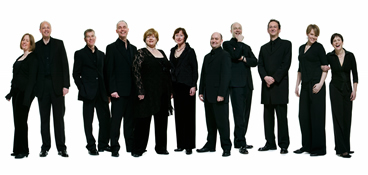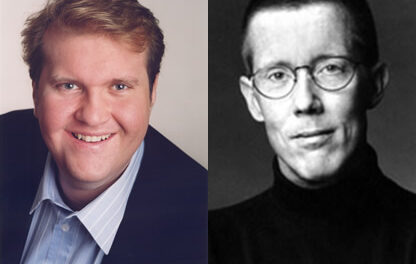The idea behind the program was interesting, even intriguing: In June 1520, King Henry VIII went to France to meet with King Francois I as a way to forge a diplomatic alliance (the event has been dramatized on the cable television program, “The Tudors.”) The two kings met near Calais, accompanied by retinues of thousands, and huge sums of money were spent lavishly on tents, decorations, costumes, jewelry and food. Each king had soldiers, not for hostilities, but for jousting and tournament games.
And each king also brought choristers and music directors. One of the more unusual elements of this meeting was for music from each nation to be presented for the occasion, sort of a musical “shout-out.” The English were led by William Cornysh, or Cornish, or Cornyshe, the French by Jean Mouton. Both were masters of Renaissance polyphonic composition (they were of the same period as Josquin des Prez, several years ahead of Tallis, Byrd and Sheppard). And the leading choral group that specializes today in Renaissance polyphony came to a Duke Performances sponsored event in Duke University Chapel to perform music by those composers. The ten members of the Tallis Scholars, led by Peter Phillips, used their considerable vocal and musical skills to great advantage in the wonderful space of the Chapel, letting the audience know what kind of music was being composed and performed at about the time of this unusual meeting 490 years ago, known as “Field of Cloth of Gold.”
No lively madrigals, however. In fact, the music was somber, even contemplative in nature, and nearly all of it quite sacred, requiring the large audience to be especially focused to fully appreciate the compositional and performing skills on display. The all-a cappella program was quite rewarding, too, as the singers wove intricate melody patterns and occasionally intricate rhythms into a seamless blend of straight-tone music-making. And this was one of the true wonders of the performance. The ensemble consisted of two sopranos, two altos, two tenors and four basses. Unless someone were sitting in the singers’ lap, it was next to impossible to pick out which voice was dominant in the ensemble on a particular line. What appeared to those in the audience to be one specific singer actually was two singers doubling on one part. Thus, a reviewer finds it difficult, if not impossible, to cite this singer or that singer for a particularly noteworthy sound — the sound came from more than one voice, although it sounded as if it came from only one voice. Perhaps the acoustics of the setting contributed to this as well.
Two selections were particular highlights: John Browne’s “Salve Regina” and Cornysh’s “Magnificat.” Browne (a contemporary of Cornysh) composed this setting as a series of rolling lines, sometimes utilizing all vocal parts, and at least once in the third section focusing on the bass and soprano parts in an incredibly long melisma. This was just one of several such examples of this compositional device by the composers — stunningly long musical lines consisting of dozens of notes, sometimes in unison and other times in harmony, to sing just one syllable, such as the word “et,” for example. The sound often cascaded, as in the word “heaven” early in the piece. Sometimes the singers sang texts in their part so separate and distinct from each other that one wondered how they could keep focused on their own line without losing track (Practice, of course, practice.) The Cornysh setting for the “Magnificat,” like the Browne piece, seemed to encapsulate the best of this era’s kind of music. Following an introduction by male voices, the piece unfolded in both plainsong chant and glorious and elaborate polyphony, often alternating from line to line, with both a tight blend and some occasional soaring individual lines, such as the soprano on “in brachio suo.”
Mouton’s music seemed at times a bit gentler than that of Cornysh, in such works as his “Ave Maria,” and especially in three lines of that piece, “O Maria dulcissima,” “O Maria piisima” and “O Maria sanctissima.” The ensemble also gave stunning readings to Mouton’s “Kyrie” and “Agnus Dei” from his Missa Dictes and his brief “Salva nos.” Phillips chose one non-sacred English-language work by Cornysh, “Ah Robyn,” that is a sad love song, and another English-language sacred work for eight voices by Cornysh, “Woefully arrayed,” that contained stunningly harsh lyrics describing the crucifixion of Jesus (“Of sharp thorn I have worn / a crown on my head / so pained, so strained, so rueful, so red. . .”)
For an encore, the singers returned to perform the lovely “O Nata Lux” by Tallis, a brief piece marked by its noticeable dissonances at the end of the final phrases.
The Tallis Scholars last sang at Duke in 2008, performing 16th and 17th century music around the theme “Dream Visions From the Spanish High Renaissance.” The four-year hiatus was long but definitely worth the wait. These singers are masters at what they do.













